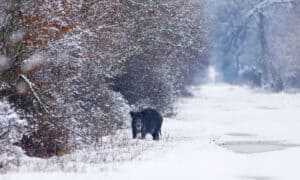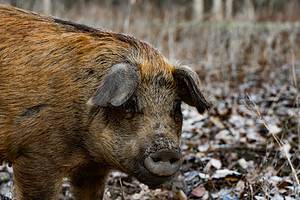Florida is home to a lot of wild animals that we know and love. Panthers, deer, and bobcats are some of our reader’s favorites! But did you know that Florida is home to one of the largest populations of wild hogs?
It’s true! You can find wild hogs in all 67 counties of the Sunshine State. The population is said to be over 500,000! We’ve curated a guide of everything you need to know about feral hogs, whether you live in or are just visiting the state.
The History of Hogs in Florida
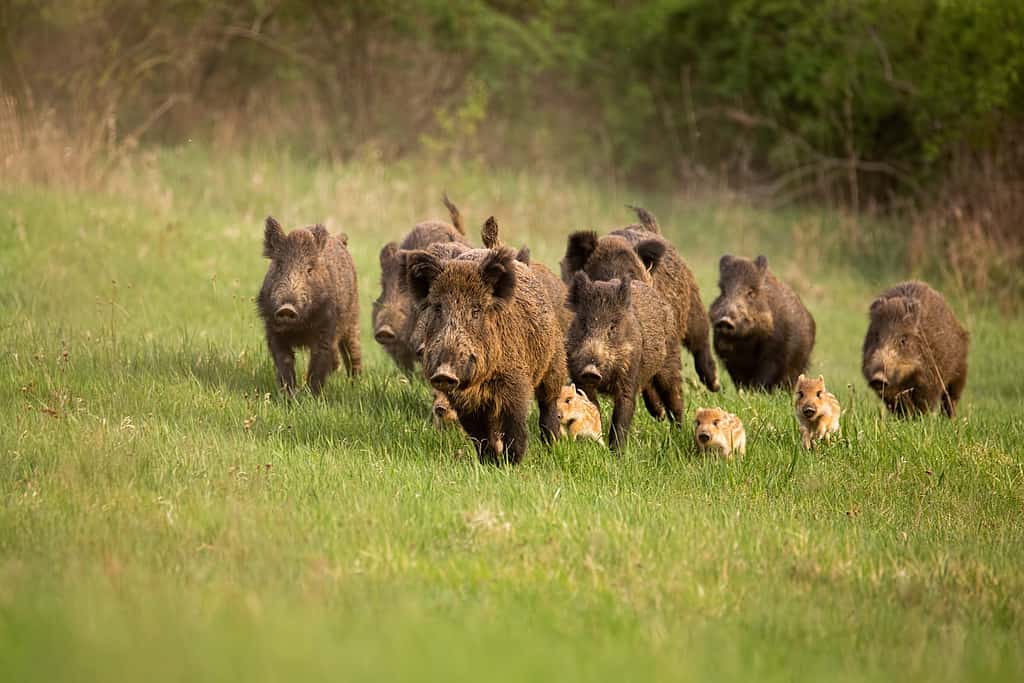
You can find wild hogs in all 67 counties of Florida.
©iStock.com/JMrocek
Florida has had wild pigs since the sixteenth century. Hernando de Soto, a Spanish adventurer, brought a herd of pigs with him when his boats touched down in Florida in 1539. Despite the fact that de Soto never discovered the gold he was looking for, pigs quickly formed a breeding population.
Wild pigs have adapted to Florida’s ecosystem over time, and “native” animals now rely on them. The endangered Florida panther consumes up to 40% of its food as wild pigs.
Wild hogs are perceptive, adaptable creatures. They are cautious of people despite having a huge size and sharp tusks. Contrary to a common assumption, wild pigs do not have any contagious illnesses that are easily spread to people.
Can You Hunt Wild Hogs in Florida?
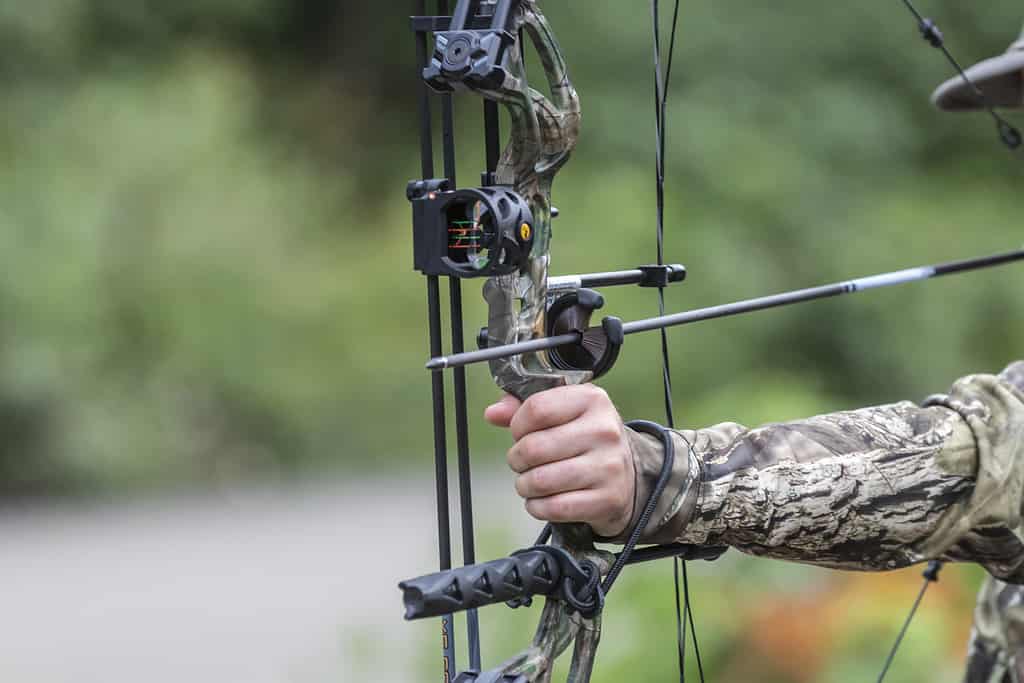
Someone Holding a Compound Hunting Bow
©Stefan Malloch/ via Getty Images
In Florida, pig hunting is fairly common. In fact, after deer, it is the animal that is hunted the most in the state. Florida is a great state to think about hunting in because of the significant and expanding number of feral hogs.
A basic license is all that is required for shooting on public property for both locals and non-residents. There are absolutely no rules or permits on private property. There are hog bag limitations in some Wildlife Management Areas (WMAs), and hunting is only permitted during specific seasons of the year.
Size of Wild Hogs in Florida
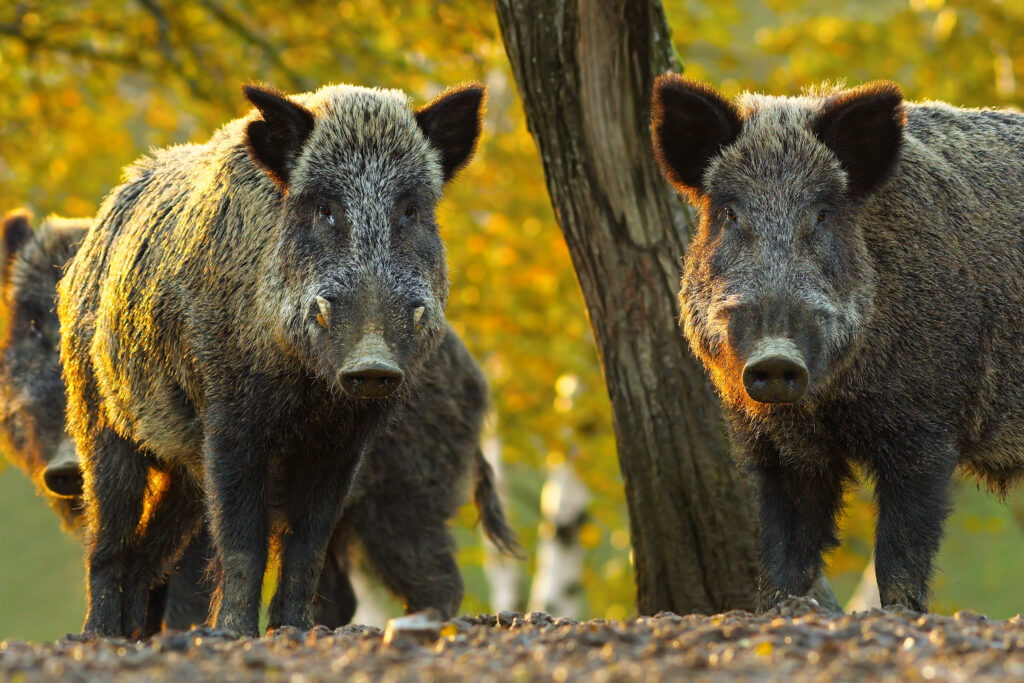
Wild hogs have long snouts, massive tusks, wedge-shaped heads, and stiff hair
©iStock.com/taviphoto
Any pig that is not kept behind a fence such as domestic pigs, Eurasian wild boars, and domestic-Eurasian wild boar hybrids, is considered a wild pig. They can grow to a length of three to five feet and weigh between 30 and 420 pounds as adults.
As the animal ages, it becomes more obvious that female wild pigs are smaller than males.
The colors of wild pigs range widely, from black to reddish brown to white. They may also be plain in color or feature speckling. Long snouts, massive tusks, wedge-shaped heads, and stiff hair are further identifying traits.
Are Wild Hogs Dangerous?

The rooting activity of wild hogs, as they search for food beneath the surface, causes major damage.
©iStock.com/xalanx
In addition to the effects of devouring, destroying, and trampling a huge amount of natural vegetation and crops, the rooting activity of wild hogs also causes major harm. Searching for food beneath the ground’s surface, or “rooting,” disturbs the soil’s stability, uproots or weakens native flora, destroys lawns, and promotes erosion.
Their moping behavior damages the banks of streams and little ponds, which may lower the quality of the water. They also feed on animals that lay their eggs on the ground, such as sea turtles.
There is no ignoring the fact that feral hogs are among the most harmful, invasive, and hazardous creatures in North America. As an invasive species, they have the power to completely take over an area and destroy crops, often without ever being observed by humans.
They have the potential to grow large, form large packs, and, certainly, exhibit a particularly unpleasant temperament. Even among hunters, feral hogs have a terrible reputation because they have the potential to seriously harm the ecology in which they live.
How to Get Rid of Feral Hogs
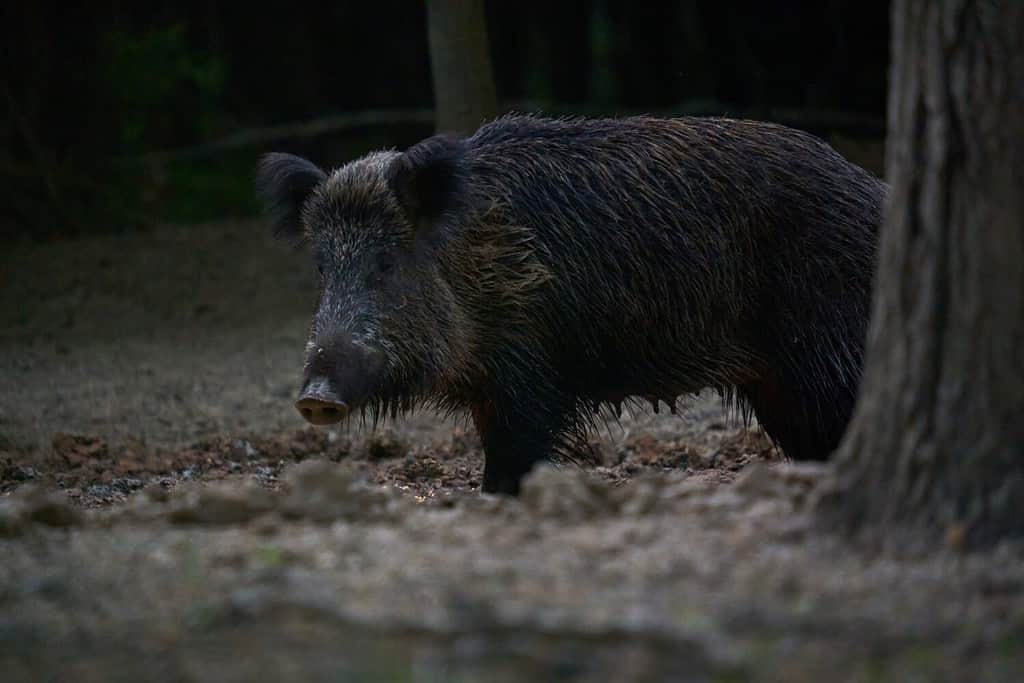
On average feral hogs are 5 to 6 feet long, measuring from snout to tail.
©Slatan/Shutterstock.com
If you live in one of the 67 counties in Florida that has wild hogs, they can easily disrupt your daily life. If you think you’ve found them in your yard, you have an entirely different problem on your hands. Thankfully, we’ve found a handful of easy ways to get rid of these pesky piggies.
Inspect the Area

Wild hogs like to roll about in the mud on your land.
©iStock.com/1448628063
Examine the environment around your home, paying special attention to places near water sources like rivers and creeks. Wild hogs like to roll about in the mud on your land. Also, check the areas around fields, crops, and livestock. In particular, near trees that yield nuts or fruits. Search for indications of wild hog activity.
This includes searching for their excrement, signs of sliding around in the mud, the trails they leave behind, signs of their scraping on trees that left mud and hair trapped to the trees and posts, and eventually plowing or rooting of crops or vegetables. These holes will typically be pretty deep, frequently exceeding two feet.
Treat Your Yard

A seed and fertilizer spreader sitting out on a lawn
©iStock.com/
You can use Wild Hog Scram around your land to deter and push wild hogs away because it is non-toxic and safe for the environment. Homes, businesses, and farms can all make use of this product.
A rotary spreader is extremely helpful to get this task done. One pound should be used per 600 square feet. Use this form in regions where you have seen wild hog activity or evidence of feral hog activity.
Cover the affected areas and an additional 30 feet surrounding them. Use the scoop that comes with this product to evenly cover any gardens, fields, or crops if you don’t have a spreader.
Live Traps
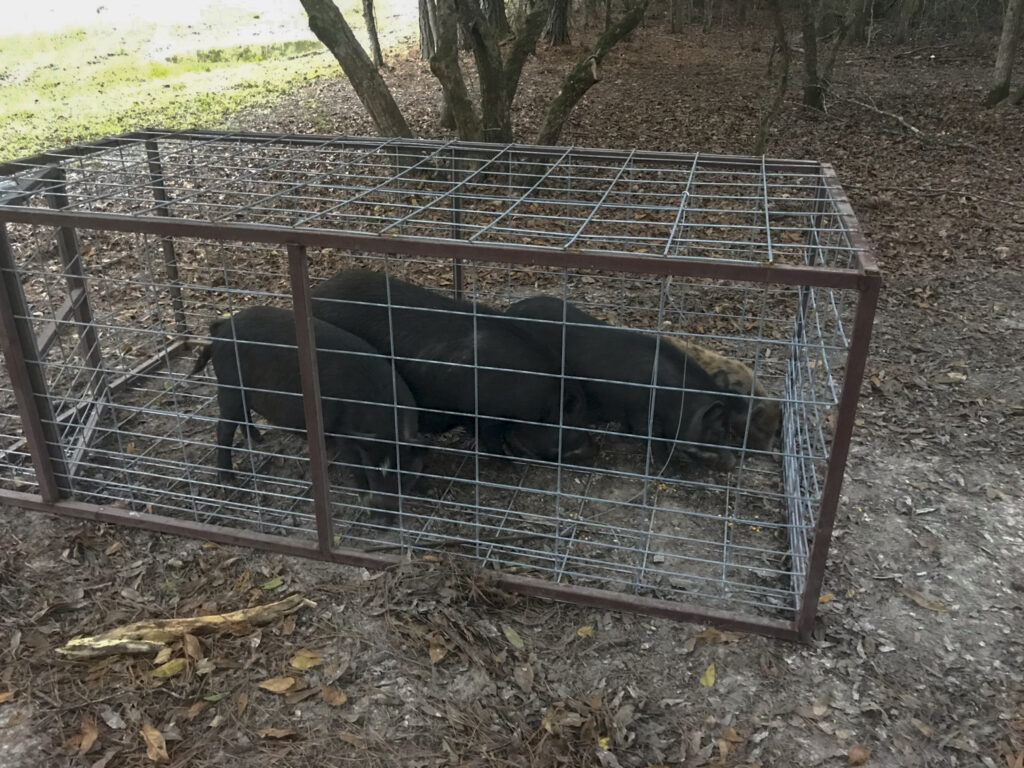
Wild hogs caught in a trap.
©iStock.com/Tim Bingham
Trapping the persistent feral hogs might be the best course of action. We advise utilizing a sizable Solutions Humane Live Trap for this. Put the trap up in a public space where the hogs have been busy and bait it with food the hog would enjoy.
After setting up the trigger, keep an eye on the trap for a few days. The feral hog will soon be apprehended, at which point you can give them to animal control.
The photo featured at the top of this post is © iStock.com/JMrocek
Thank you for reading! Have some feedback for us? Contact the AZ Animals editorial team.



